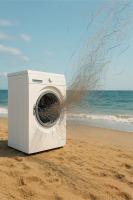Textile microfibers: emissions, quantification and analytical characterization. A household laundry perspective
IF 6.2
引用次数: 0
Abstract
Textile microfibers are among the most significant emerging pollutants. The textile industry and household (laundry) wastewaters are the primary sources of these microfibers, responsible for up to 90% of fragmented fibers entering the aquatic environment. This review updates current knowledge of the last 20 years on microfiber release associated with laundry and textile processes, with a special emphasis on household laundry, and explores potential removal strategies. Scenarios for reducing synthetic microfiber release through interventions at multiple levels and involving different stakeholders including industry, consumers, and governments are discussed.
Herein, the key steps for microfiber characterization in effluents and laundry processes are also discussed in detail, underlying the need for monitoring, regulation, and effective measures to minimize the uncontrolled release of microfibers into the environment, thus reducing the prevalence of these environmental contaminants and their suspected impact.

纺织微纤维:排放、定量和分析表征。家庭洗衣视角
纺织微纤维是最重要的新兴污染物之一。纺织工业和家庭(洗衣)废水是这些微纤维的主要来源,高达90%的碎片纤维进入水生环境。这篇综述更新了过去20年来关于与洗衣和纺织工艺相关的超细纤维释放的最新知识,特别强调了家庭洗衣,并探讨了潜在的去除策略。讨论了通过多层次干预和涉及不同利益相关者(包括工业、消费者和政府)来减少合成超细纤维释放的方案。本文还详细讨论了废水和洗衣过程中超细纤维表征的关键步骤,指出了监测、监管和有效措施的必要性,以最大限度地减少超细纤维不受控制地释放到环境中,从而减少这些环境污染物的流行及其可能的影响。
本文章由计算机程序翻译,如有差异,请以英文原文为准。
求助全文
约1分钟内获得全文
求助全文

 求助内容:
求助内容: 应助结果提醒方式:
应助结果提醒方式:


